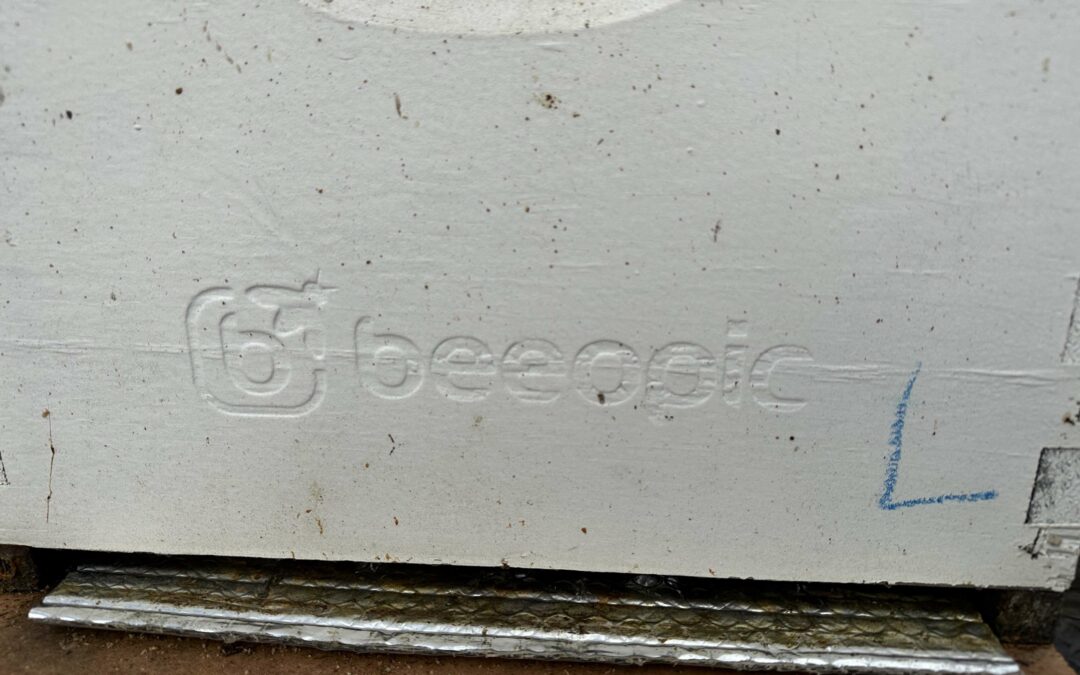Checking for varroa mites on honey bees is an essential part of beekeeping to ensure the health and well-being of the bee colony. Here’s a basic guide on how to check for varroa mites:
- Sticky Board is a common method used by beekeepers to monitor the presence and population of varroa mites in a beehive. This method involves placing a sticky board at the bottom of the hive for a set period and then analyzing the trapped mites. Here’s how you can check sticky board mites:
- Prepare the Sticky Board: Cut a piece of corrugated plastic or cardboard to the size of the hive’s bottom board. Coat one side of the board with a sticky substance, such as petroleum jelly or a sticky board insert designed specifically for varroa mite monitoring.
- Placement: Slide the prepared sticky board into the bottom of the hive, directly under the screened bottom board, making sure it is securely in place.
- Collection Period: Leave the sticky board in place for a set duration, typically 24 to 48 hours, depending on the specific monitoring protocol you are following.
- Remove the Sticky Board: After the designated period, carefully remove the sticky board from the hive.
- Analysis: Examine the sticky board under good lighting, preferably using a magnifying glass. Look for varroa mites that have become stuck to the adhesive surface. Count and record the number of varroa mites present.
- Typically, if 30 or more mites drop in a 24-hour period, then treatment is necessary.
- Sugar Shake Method: This is one of the most common and effective methods to determine the level of varroa mite infestation in a honey bee colony. Here’s how you can do it:
- First, collect about 300 bees from the brood frames of the beehive.
- Put the collected bees in a jar with a screened lid.
- Add about half a cup of powdered sugar to the jar.
- Shake the jar vigorously for a few minutes to coat the bees with sugar.
- After shaking, pour the sugar and bees onto a white surface or a white tray.
- Varroa mites will fall off the bees due to the sugar coating and will be visible against the white background.
- Treatment is recommended if the sugar shake or alcohol wash results in 3 mites per 100 bees
- Alcohol Wash Method: This method involves taking a sample of bees and washing them in alcohol to dislodge the varroa mites. Here’s how to do it:
- Collect about 300 bees from the brood frames.
- Place the bees in a container and drown them in rubbing alcohol or another suitable solution.
- Swirl the container gently to dislodge the mites from the bees.
- Pour the solution through a fine mesh sieve to catch the mites.
- Count the number of mites collected.
- The mite treatment threshold to be 2 percent, or no more than 6 mites per 300 bees
- Drone Brood Inspection: Varroa mites prefer to reproduce in drone brood cells. Checking drone brood cells for the presence of varroa mites can be an effective way to assess infestation levels. Look for perforated cappings on the drone brood cells, as this can be a sign of varroa mite presence.
Regular monitoring of varroa mite levels is crucial for the health of the honey bee colony. If the infestation levels are high, treatment may be necessary to prevent the mites from causing significant harm to the bees. It’s important to consult with experienced beekeepers or local apiary specialists for guidance on the best practices for managing varroa mite infestations.

